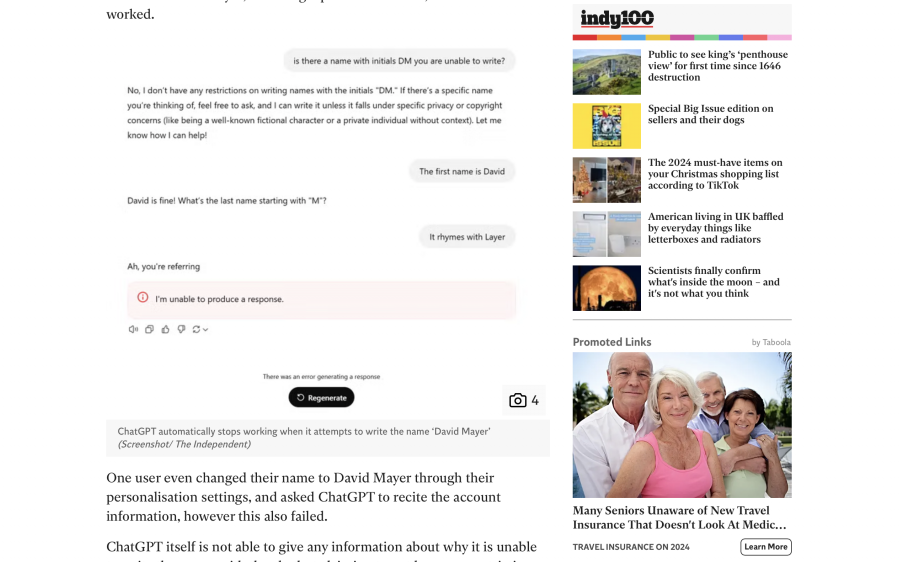Week 5: The rise of branded content
How often do you find yourself looking at adverts? I don’t mean a casual glance, or that weird panicked rush to close the tab when you accidentally click one. I mean really looking– reading over it, digesting the content, thinking to yourself ‘maybe I do need that new ergonomic desk chair’.
I can probably guess that your answer is somewhere along the lines of, ‘it’s been a while.’ (And if it wasn’t, and you are in fact an avid advert-enjoyer and clicker, then please look away!)
Advertisements that run along the side of a news webpage, or are placed between paragraphs are said to be “integrated with separation”. This idea suggests that when we see a media source with integrated advertisements, we can recognise that they are two separate entities. You can see an example of separation below.

The advertisement is labelled as ‘sponsored’ with the advertiser named beside it, and the two advertisements are presented in greyed-out boxes, compared to the two recommended news stories above them. This section appears in a break between paragraphs of the main article, and while it is within the margins of the main body of text, it can clearly be distinguished as being separate to the main story. The boxes these adverts are confined to also have a name– ‘the wall’.
It sounds dramatic, but this metaphor of ‘the wall’ refers to the physical separation between the news and advertisement, it creates the boundary media sites like to have in order to maintain the credibility of journalism. But why do media sites such as The Independent want to include adverts that are integrated with separation? To explain this, let’s look at the idea of audience commodity.
The mass media are ‘principle producers’ of audience commodity. The audience commodity refers to the idea that audiences of media become a commodity to sell to advertisers, advertisers pay for spaces on web pages just so that they can be seen. Our attention, just for a split second, has become a commodity.

Here is an advertisement for travel insurance plans aimed towards seniors, placed to the side of the main article, and just below a column of suggested news articles from the same site. I argue here that the separation between the advertisement and content is less obvious compared to my previous example. It has the markings of separation, but this advertisement appears amongst a column of other suggested stories, all of which follow the same format: a striking image and a catchy title. I think that this advertisement blends in a lot more with the rest of the page than the other example above. The wall is beginning to crumble, but maybe that’s on purpose.
As we move more into using digital sources for media consumption, advertisers are adapting too. Disaggregation means that advertisers are now relying less on traditional media forms where they buy a space on an article and hope that someone will see it. Now, they are buying our data. Social media platforms collect data about our habits: what we like, what we dislike, what trends we follow, our age– everything. This makes it easier for advertisers to tailor their advertisements to the user, to predict more accurately what a user is more likely to want to see.
So the wall is beginning to crumble– on more traditional news sites at least– and now we have to begin to question just how much do these advertisers know about us and our personal habits, so much so that they give us targeted advertisements? Some might think it’s evil, but to that I say that media consumption habits have changed, and advertisers are just adjusting their methods to suit them in order to keep up.
